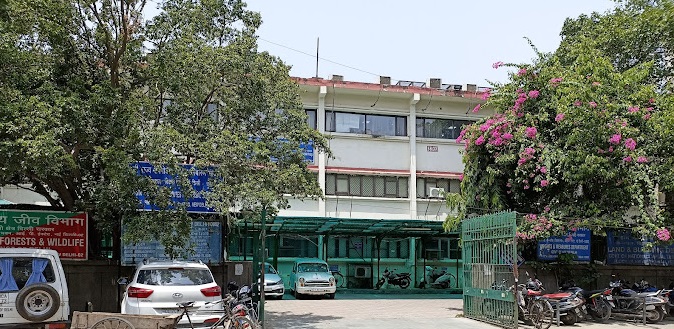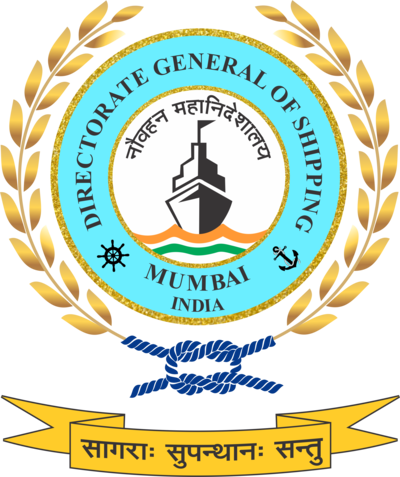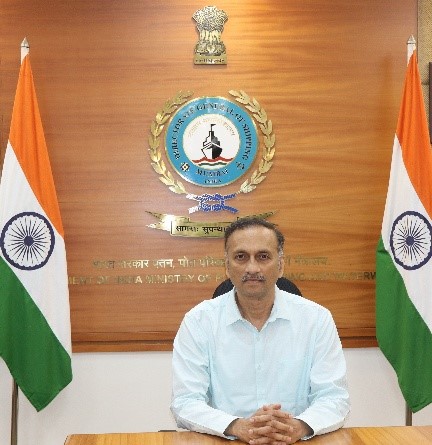Broad Vision & Mission
India's maritime sector is poised for significant growth under the guiding principles of Maritime India Vision 2030 and Maritime Amrit Kaal Vision 2047. These visions prioritize enhancing India’s tonnage and formulating incentives to promote coastal shipping, aligning with the broader objectives of Atma Nirbhar Bharat. The goal is to position India among the top 5 nations in global tonnage rankings by 2047.

- Broad Vision & Mission
- Date : 28/04/2025
Maritime India Vision 2030:
- Policy and Legislative Reforms for Growth of Indian Tonnage: To foster an environment conducive to the growth of Indian-flagged tonnage, MIV 2030 introduces critical amendments to the regulatory framework that governs the registration and operation of vessels under the Indian flag. The Merchant Shipping Bill is proposed to undergo reforms designed to ease compliance and facilitate smoother operational processes for Indian-flagged vessels. By enabling more Indian entities, including those with significant Indian ownership, to register vessels domestically, MIV 2030 aims to expand India’s flagged fleet, ensuring greater participation in both coastal and global maritime activities.
- Fiscal Incentives to Enhance Competitive Positioning: To make Indian-flagged vessels financially viable and globally competitive, MIV 2030 includes a suite of fiscal incentives.
- Extension of Tonnage Tax: Recognizing the need for tax simplification, the tonnage tax regime will be extended to inland vessels, supporting growth within inland waterways and fostering investment.
- Subsidies and Deferred Taxation: Dedicated subsidy programs and deferred tax payment options will be available to reduce upfront financial burdens and align operational costs with international standards.
- Infrastructure Status for Shipping: The shipping sector will benefit from being accorded infrastructure status, enabling long-term, low-interest financing options for Indian ship owners, thereby encouraging vessel acquisitions and operational enhancements.
- Promote Domestic Demand for Indian Shipping Tonnage: MIV 2030 leverages Atmanirbhar initiatives and regulatory measures to foster a competitive domestic market for Indian shipping vessels.
- Outcome-Driven Focus on Self-Sufficiency and Global Competitiveness: The vision focuses on reducing regulatory hurdles, improving cost-competitiveness, and prioritizing cargo for Indian ships, aiming for a resilient maritime industry.
Maritime Amrit Kaal Vision 2047:
The Amrit Kaal Vision 2047 is a strategic roadmap to guide the nation’s maritime sector towards becoming a global leader by the year 2047. It outlines ambitious goals and initiatives across various areas, including enhancing India's shipping capacity, promoting sustainability, advancing technology, and strengthening global maritime presence. The vision focuses on creating a self-reliant, competitive, and environmentally conscious maritime industry that supports India’s economic growth and global trade aspirations while addressing key challenges and leveraging opportunities within the maritime domain.
It outlines a comprehensive approach to promoting the development of Indian shipping tonnage.
- Enhancing Indian-Flagged Fleet: It emphasizes the need for policies to increase the share of Indian-flagged vessels globally. Currently, India's fleet represents a small fraction of the global fleet, significantly lagging behind countries like China and Singapore. Efforts are focused on improving the registration and operational processes for Indian-flagged vessels to make India more competitive internationally.
- Fiscal and Tax Incentives: Various financial measures are proposed to support Indian-flagged ships. This includes revisiting tax provisions such as Tax Deducted at Source (TDS) on seafarers' wages, providing input tax credits for fuel and spares, and exempting Indian ships from GST on maintenance, repair, and overhaul services consumed abroad. Granting infrastructure status to shipping and removing restrictions on ship leasing by insurance companies are also highlighted as key initiatives.
- Right of First Refusal (ROFR) Mechanism: The vision continues to emphasize the ROFR for Indian-flagged vessels to ensure their prioritization in carrying certain cargoes, particularly bulk imports. This policy aims to strengthen the demand for Indian ships and enhance their market presence.
- Improving Efficiency and Competitive Standing: The plan seeks to reduce operational costs and create a level playing field for Indian vessels through regulatory simplifications, streamlined customs procedures, and eliminating certain bureaucratic hurdles. This includes measures to reduce costs on vessel imports and simplify port clearance processes.
- Sustainability and Green Commitments: The growth of Indian tonnage is also linked to environmental objectives. Increasing the number of Indian-flagged vessels is seen as a means to support India's climate goals, particularly those agreed upon at international conferences like COP. This aligns with broader sustainability initiatives in maritime operations.
The overarching aim of these initiatives is to create a robust and globally competitive Indian shipping industry that contributes to economic growth, employment, and national security, while also aligning with green and sustainable maritime practices.




























































